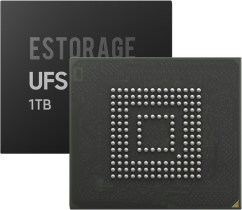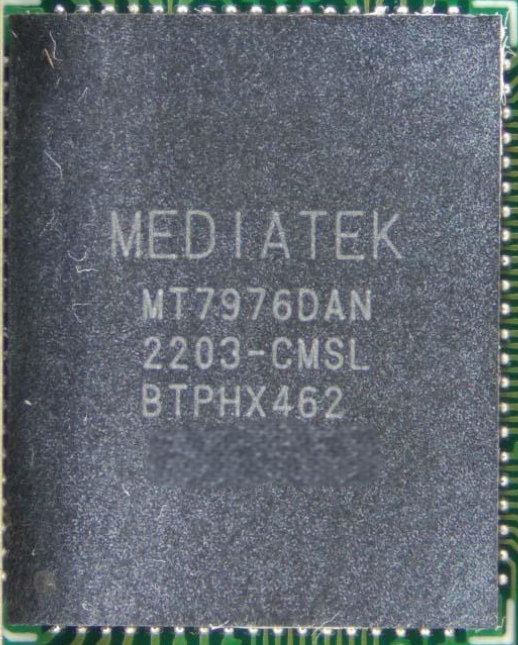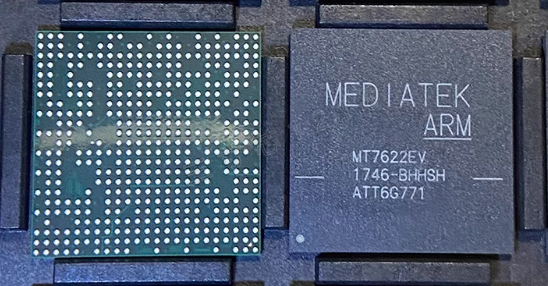Product Description
The MediaTek MT7981BA/A is a cutting-edge networking chip designed for high-performance routers, gateways, and other Wi-Fi 6-enabled devices. The chip integrates advanced Wi-Fi 6 features with strong processing power and enhanced wired connectivity to provide fast, efficient, and secure wireless networking.
Wi-Fi 6 (802.11ax) Performance:
Wi-Fi 6, or 802.11ax, is the latest wireless standard, providing several key enhancements over the previous Wi-Fi 5 (802.11ac) standard. With the MT7981BA/A, MediaTek brings the benefits of Wi-Fi 6 to consumer and enterprise networking devices. The chip operates in both the 2.4GHz and 5GHz bands, offering a combined total throughput of up to 1.8 Gbps. This high-speed capability enables demanding applications such as 4K/8K video streaming, online gaming, and large file transfers to run smoothly even in high-density environments like homes with multiple smart devices or office spaces with heavy wireless traffic.
The MU-MIMO and OFDMA features are particularly useful in crowded environments. MU-MIMO allows the MT7981BA/A to communicate with multiple devices simultaneously, rather than sequentially, which dramatically reduces congestion and latency. OFDMA further improves network efficiency by subdividing channels, enabling multiple devices to transmit data at the same time without interference. These features make the MT7981BA/A ideal for applications that require low latency and high reliability, such as gaming, video conferencing, and smart home automation.
Target Wake Time (TWT) is another feature of Wi-Fi 6 that improves power efficiency for connected devices. TWT allows devices like smartphones, tablets, and IoT devices to schedule communication times with the router, reducing the amount of time they spend searching for a signal and thereby conserving battery life.
Processing Power for Advanced Networking:
At the heart of the MT7981BA/A lies the quad-core ARM Cortex-A53 processor, which operates at up to 1.5 GHz. This processing power is essential for handling the various tasks required in modern networking devices, such as routing, traffic management, firewalling, VPN processing, and security monitoring. The multi-core CPU ensures that the chip can handle demanding workloads efficiently, enabling fast and responsive networking even under heavy traffic conditions.
Additionally, hardware acceleration for encryption and decryption tasks enables the MT7981BA/A to handle secure connections, such as VPN tunnels, without significantly impacting overall performance. This makes the chip well-suited for use in devices that need to support secure internet browsing, remote work environments, or private networks, ensuring that both speed and security are maintained.
Enhanced Wired Connectivity:
One of the key features of the MT7981BA/A is its integrated 2.5GbE Ethernet port, which supports high-speed wired connections. This is a significant upgrade over the standard Gigabit Ethernet ports commonly found in many routers and network devices. With 2.5GbE, users can experience faster internet speeds and reduced latency for applications that require heavy data transfer, such as gaming, video streaming, or file-sharing servers.
This 2.5GbE port is especially beneficial for environments that require fast, low-latency connections, such as businesses with multiple employees working on bandwidth-heavy tasks or homes with multiple users streaming content simultaneously. The chip also supports additional Gigabit Ethernet ports via external switch interfaces, giving manufacturers flexibility when designing their devices and ensuring they can offer a wide range of wired connectivity options.
Security and Privacy:
The MT7981BA/A provides robust security features, including WPA3 encryption for Wi-Fi, ensuring that connected devices are protected against unauthorized access. With growing concerns about network security, the inclusion of WPA3 is crucial for ensuring the privacy of user data and the integrity of the network.
For advanced network security, the chip supports hardware-based encryption and decryption for VPN protocols such as IPsec, L2TP, and PPTP, ensuring secure communication over the internet. The inclusion of a built-in firewall, along with support for Network Address Translation (NAT), helps protect the local network from external threats and allows efficient management of IP addresses.
Power Efficiency:
The MT7981BA/A is designed with power efficiency in mind, making it suitable for use in a variety of devices that need to balance high performance with low energy consumption. The chip's Dynamic Voltage and Frequency Scaling (DVFS) adjusts power consumption based on workload, allowing it to scale up when processing power is needed and scale down during idle periods, thereby improving overall energy efficiency.
This low power design is particularly important for devices that need to run continuously, such as routers and gateways. The chip’s ability to operate efficiently without generating excessive heat or consuming too much power contributes to the long-term reliability and sustainability of the end devices.
In summary, the MediaTek MT7981BA/A is a highly advanced chip that combines Wi-Fi 6 technology, a powerful multi-core processor, 2.5GbE Ethernet support, and a suite of security features, making it a perfect solution for high-performance networking devices. Whether used in home routers, enterprise gateways, or high-speed access points, the MT7981BA/A provides the necessary performance, reliability, and security to meet the demands of modern internet-connected environments.
Specification
Wi-Fi Technology:
Wi-Fi Standard: IEEE 802.11a/b/g/n/ac/ax (Wi-Fi 6)
Maximum Data Rate:
2.4GHz band: Up to 574 Mbps
5GHz band: Up to 1.2 Gbps
Combined throughput: Up to 1.8 Gbps in dual-band configuration
MU-MIMO Support: Multi-User, Multiple Input, Multiple Output (MU-MIMO) allows multiple devices to communicate with the router simultaneously, improving efficiency and reducing congestion on the network.
OFDMA (Orthogonal Frequency Division Multiple Access): OFDMA enhances bandwidth efficiency by allowing multiple users to share the same channel at the same time, which improves the performance of high-density networks.
TWT (Target Wake Time): A power-saving feature that enables devices to communicate with the router at scheduled times, reducing power consumption and extending battery life in IoT and mobile devices.
CPU and Processing Power:
Processor: Quad-core ARM Cortex-A53 CPU, providing solid processing power for routing tasks, firewall, VPN, and other networking functionalities.
CPU Clock Speed: The processor operates at a clock speed of up to 1.5 GHz, enabling fast data handling and improved performance for advanced networking functions.
Acceleration: Supports hardware acceleration for data encryption and decryption, improving the performance of VPNs and other secure applications without impacting overall system speed.
Ethernet and Wired Connectivity:
Integrated 2.5GbE Ethernet Port: The MT7981BA/A integrates a 2.5 Gigabit Ethernet port for high-speed wired connectivity, enabling faster wired internet connections and improving overall network throughput.
Additional Ports: Support for multiple Gigabit Ethernet ports via external switch interfaces, allowing for flexible connectivity options in routers, gateways, and other networking devices.
Security Features:
Wi-Fi Security: WPA3 encryption for enhanced wireless security, ensuring that devices are protected against unauthorized access and cyber threats.
Network Security: Hardware-based encryption and support for IPsec, PPTP, and L2TP VPN protocols provide secure data transfers across the network.
Firewall and NAT (Network Address Translation): Built-in firewall functionality for secure packet filtering and support for NAT for efficient IP address management.
Power Efficiency:
Low Power Design: The chip is optimized for low power consumption, ensuring that networking devices using the MT7981BA/A can operate efficiently without excessive heat generation or battery drain.
Advanced Power Management: Dynamic Voltage and Frequency Scaling (DVFS) technology adjusts the power based on the workload, improving energy efficiency in a variety of usage scenarios.









